News feed
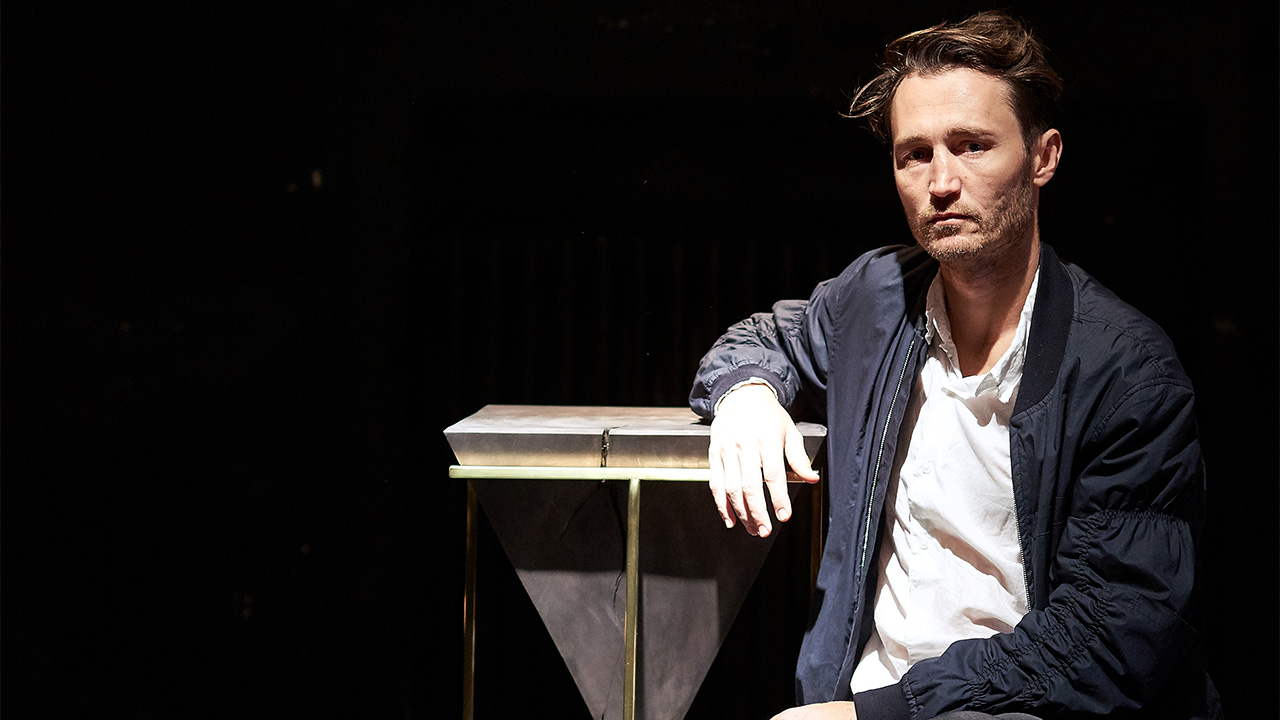
Multi-disciplinarian Toby Jones featured alongside work from his Gravity series at Salone del Mobile
CREDIT: Fiona Susanto/Supplied
Art director, designer, jeweller, textile artist, furniture maker – Toby Jones has forged a multifaceted career on the Australian design scene that shows no signs of slowing down after 15 years. Previously an art director at storied denim label Ksubi, Jones has begun to chart a new career not only as a branding expert and creative director but as conceptual furniture maker of tables that defy gravity. Born on the north coast of NSW, Jones credits his father, a self-taught woodworker and fine furniture maker, and mother, a textile artists with inspiring his trajectory. Last year in Sydney, Jones exhibited a collection of restored Australian wool blankets so visually striking in their resemblance to tapestries that they almost require being shown in a church of their own.
In conversation with GRAZIA, Jones retraces his journey from humble ‘Slip, Slop, Slap’ beginnings to his time at Ksubi, Salone and beyond.
Could you describe for us what you’re showing at Salone del Mobile’s Local Design showcase? “I’m exhibiting one piece – this big heavy thing here. I’ve exhibited them once before in August last year at Paramount Projects alongside my blankets. That was my first show ever actually and this is basically my second.”
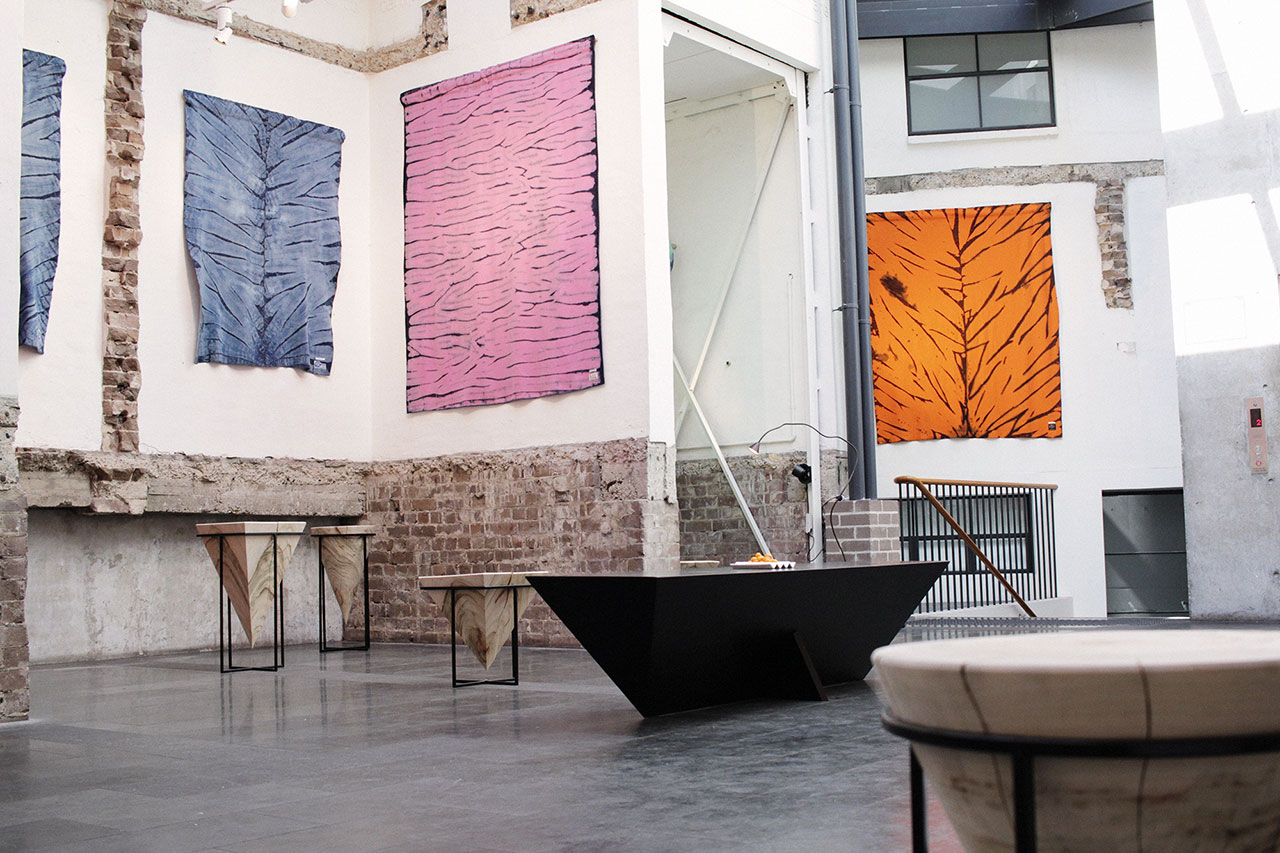
For his debut show at Paramount Projects, Gravity, Jones showed a collection of tables carved from camphor laurel (an invasive weed in Australia) that explored the relationship between simple forms and unerring forces
CREDIT: Supplied
How long have you been making these pieces for? “I’ve been a designer of different proportions for about 13 years. I do all sorts of things – I’m a graphic designer, an art director and I’ve worked mainly in the fashion industry for the last decade. I’ve also been making my own jewellery for a long time.”
Is this something of an extension from the jewellEry? “This has taken over from the jewellery, and it’s where I was aiming to get to, more sculptural-based work that’s less about technical design practice. It’s quite conceptual and heavy.”
What has the response been like to your work here in Milan? “It’s been good actually. Generally, there has been great response to the show in whole. I think that there’s almost zero awareness of design in Australia at all, particularly from an Italian and international perspective. People generally only know about [designers] like Marc Newson, so this has been really positive and people have been quite surprised by the style itself. It’s very different to Italian design. There have been a lot of different comparisons to Scandinavian design.”
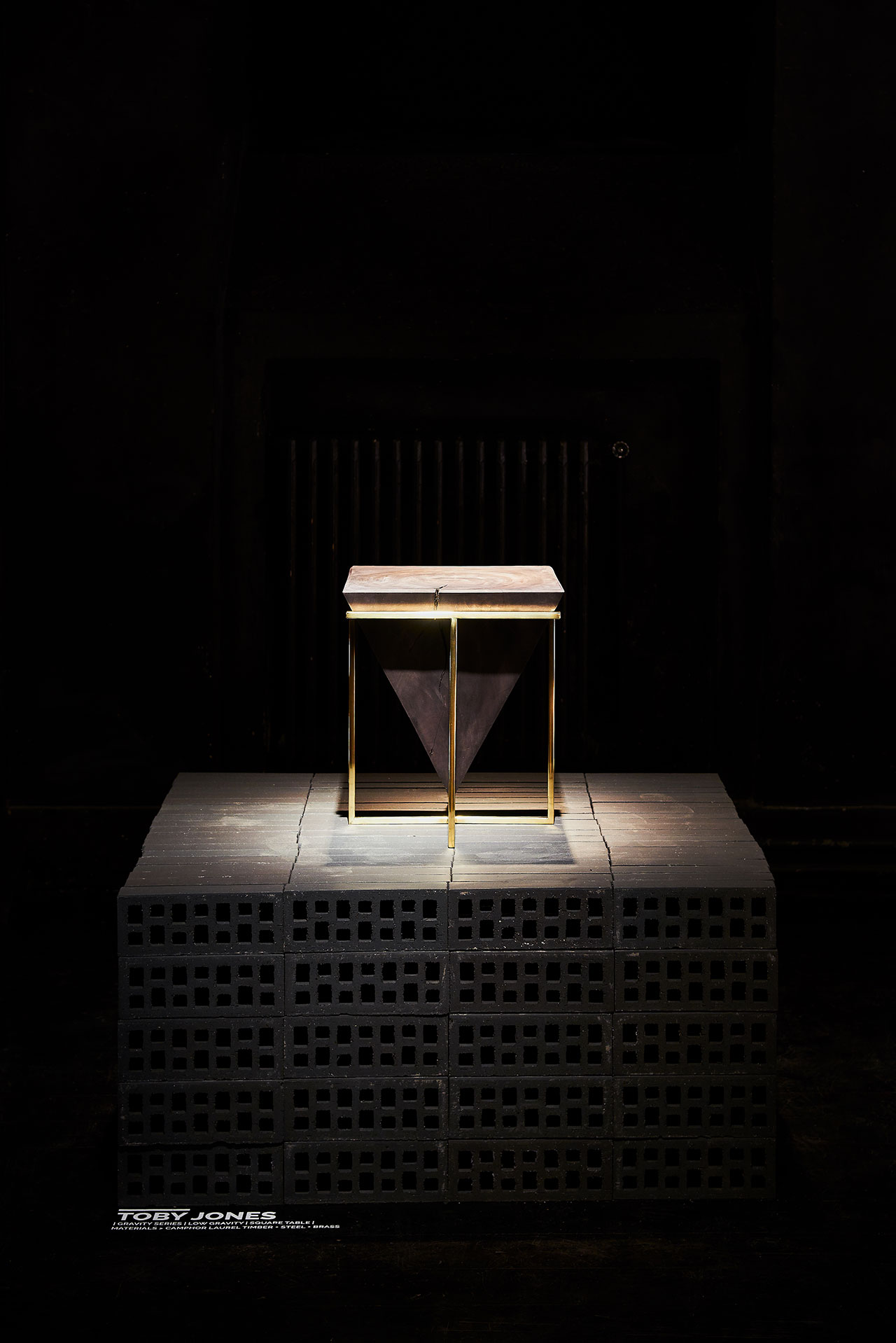
Part of Jones’ Gravity series as seen at local design’s showcase of Australian works in the Teatro Arsenale, Milan
CREDIT: Fiona Susanto/Supplied
Would you say there’s a defining element that differentiates what’s on show here from Scandinavian or Italian design? “I think there’s generally a fresh perspective. Everything [on show here] is quite varied and there isn’t a lot of consistency between products. Our separation from the rest of the world allows for difference and it gives everyone their own take on different things. My work is quite directional and maybe not for everyone. This pieces I created specifically [for Salone]. My work is usually more raw than this so I finished it up with the gold and the black.”
How did you develop this series? “This series is all called Gravity, so it’s all about mass weight and working with simple design and forms that rely on forces of nature to allow them to function. It’s the weight of [each piece] that allows it to do what it does.”
How heavy is this piece? “This one’s about 20 kilograms, and it isn’t very big. They start a lot heavier when I first cut them down from a full log of timber that’s still wet inside, so it’s really heavy. There’s a taller version that’s about 50 or 60 kilos. My studio is in Darlinghurst but I don’t do a lot of the work there. I have to travel around to get the wood, and because I use trees that are already cut down I have to do most of the work where the trees are.”
Where did this piece come from? “The north coast of New South Wales, where I grew up. My dad’s a wood worker so it helps to have those resources up there as well. And there’s plenty of trees.”
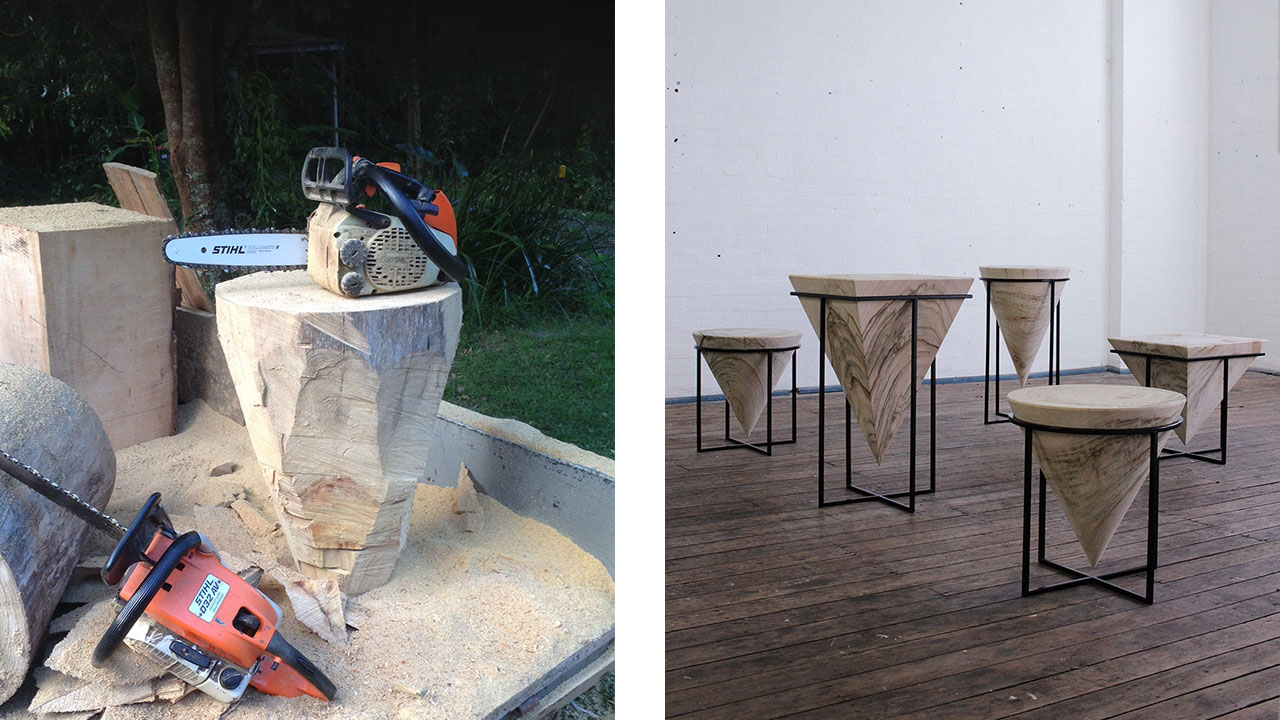
Above, the evolution of Gravity, from its raw camphor laurel form to the finished product
CREDIT: Supplied
So how did you make the transition from graphic to furniture design? “I’ve always worked for fashion brands. I used to work as the art director for Ksubi for quite a long time. My approach comes from a fairly graphic perspective, so these pieces and the blankets that I do are approached from that side of things, rather than product design. I studied at Sydney Graphics College.”
What’s your earliest memory of design? Can you remember the first thing that you created? “It was probably a T-shirt – I’ve designed thousands of those in my time. Actually, it was a sticker for the Cancer Council’s ‘Slip Slop Slap’. I designed a sticker for a national competition in primary school. It won and it was made into a sticker. It was a cartoon, and I think the Ls in each word were hands doing something, so one was slipping, one slopping, and one slapping.”

Select pieces from Jones’ eponymous jewellery label
CREDIT: Supplied
Is there anyone who has had a particularly strong influence on your career trajectory? “Because I’ve done lots of things, I think I have a bit of a different approach to furniture and design, particularly as I come from a fashion and branding background. My dad is a woodworker so I guess that’s always with me. He has a really great life, which he splits between doing work and surfing or hiking. I think it tends to lean toward the more surfing and hiking sides of things.”
If you could bestow one piece of advice on an aspiring Australian designer hoping to emulate your success, what would it be? “I would say just focus on strong ideas, don’t get too caught up on the technical or commercial aspects. If you have good designs and good ideas, stick to those and try to get them out there. Aim high, set the bar, and you could end up here. Next, I’d like to try and show at [Art Basel] Miami, and then I’d love to show a full collection.”
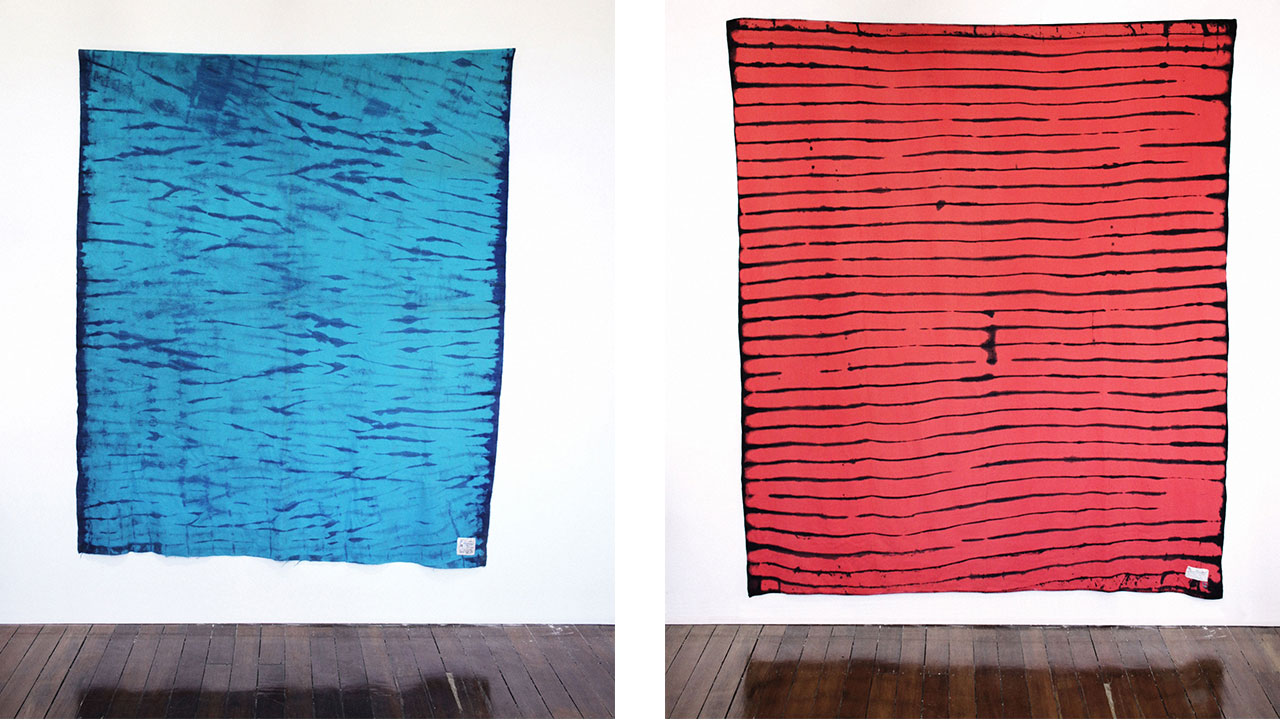
Shibori-dyed repurposed blankets from Jones Re-Up series
CREDIT: Supplied
COVER IMAGE: Fiona Susanto/Supplied










